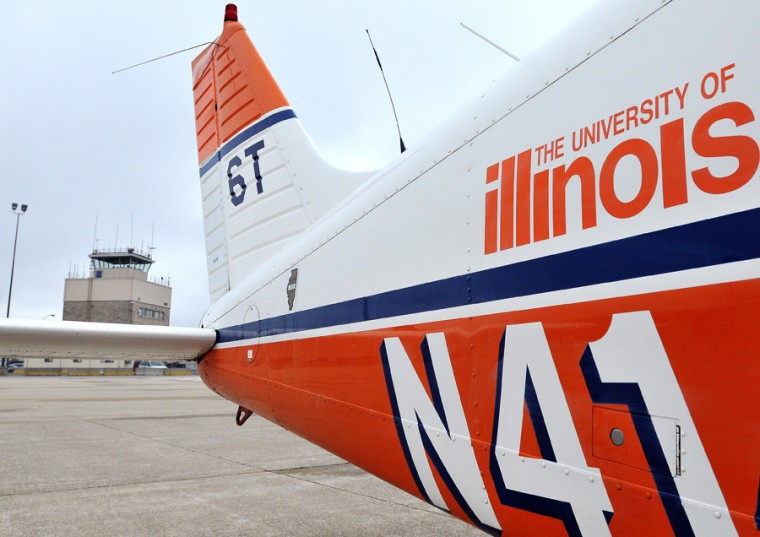Aviation cuts entrants
A University of Illinois Piper Archer stands parked near the control tower at Willard Airport in Savoy on Tuesday, April 14, 2009.
April 15, 2009
The Institute of Aviation is cutting the number of students it will accept this coming fall.
“We’ll probably have, when it’s all said and done, 60 percent to 70 percent of the students we normally see in the fall,” said Tom Emanuel, director of academic affairs.
Emanuel attributed the reduction in admissions to the Univeristy’s budget and the economy.
“It was a campus decision, but it obviously has to do with the budget. Money is very tight for Illinois and for the University of Illinois,” said Emanuel.
The Institute’s costs go well beyond other colleges in the University; the extra flight cost to each individual student is approximately $5,000 per semester. In addition to plane and maintenance costs, fuel, insurance, and up-to-date technology, another high expense is one-on-one instructional teaching, said Emanuel.
Get The Daily Illini in your inbox!
“The Institute’s costs are high because each student has to be assigned to one flight instructor. One-on-one instruction costs are very high,” he said.
Additionally, because of those high costs and current unemployment rates, the demand for learning to fly is lower, said Emanuel.
According to the Office of Admissions, the number of student applications to get in to the Institute was also lower than it has been in the past.
“The demand for learning to fly is down because of the fact that the economy is down,” Emanuel said.
Kevin Petray, junior in Aviation, said the University’s Institute is one of the premier aviation schools around.
“We are held to higher standards than other flight schools,” Petray said.
The Institute is a Part 141 flight school, which means it requires more hours and training than Part 61 flight schools. These standards go beyond what the Aviation requires, Petray said.
“It’s a unique learning experience,” he added.
Emanuel also added that current flight instructors will not be cut. He said that in addition to full-time flight instructors, the Institute has many part-time flight instructors who accept flexible hours as part of the job description.
“Plus, a lot of instructors move on to fly for regional airlines. There is quite a bit of turnover,” he added.
Emanuel said there will possibly be extra planes that are not in use, but the surplus will give maintenance more time to check and maintain the planes.
“It’s a very cyclical thing. (Student interest) will go back up as the economy goes back up and the demand to fly starts to increase,” he said.
Laura Gerhold, the Institute’s academic advisor, also added that the reduction in admissions is due to the Institute’s decision to raise admissions criteria.
“We were looking to higher admissions standards,” she said. “There’s always exceptions, but basically we moved the minimum to a 26 ACT score.”
Both Emanuel and Gerhold said the lower number of students is not simply due to a high number of transfers out of the program.
Petray said the quality of education within the program would not be affected by the decrease in students.
“I don’t think the Institute will be very affected by this. It has always been a tight-knit community; if anything, there will just be more individualized instruction.”







